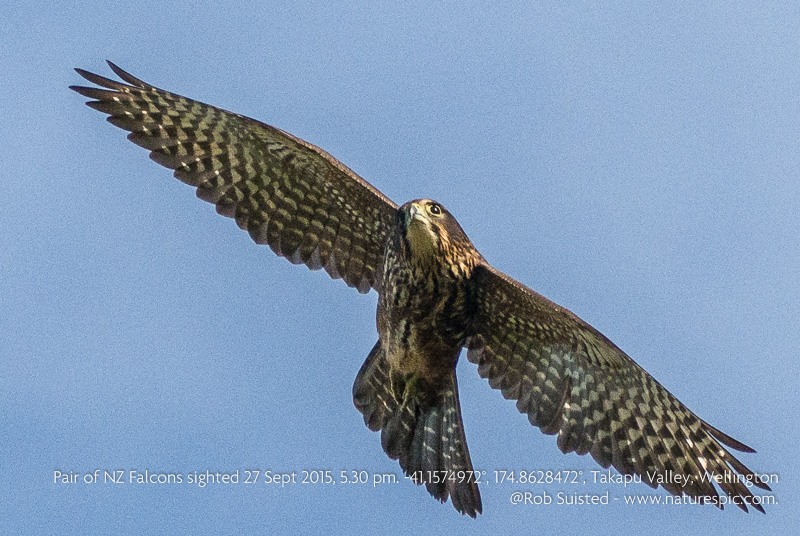We’ve had regular sightings of the rare Native New Zealand Falcon in Takapu Valley over the last few years (and some going back decades), BUT yesterday Rob Suisted (who owns land in upper Takapu Valley) photographed a pair of Falcons – kārearea (Falco novaeseelandiae), flying together, and vocalising (“ki-ki-ki-ki-ki-ki”), in what appeared to be courting behaviour.
Here’s one of the shots he took yesterday. It’s very exciting to think we’ve got potential breeding activity happening, as these birds normally need big natural home ranges.
It just goes to show that Takapu Valley is a biodiversity hotspot in Wellington. Most landowners in the valley trap for possums, stoats and rats etc (it’s so effective that the recent AHB possum control contractors have reported almost no possums caught in the valley), and birdlife is prolific and growing. No doubt the Falcons are taking advantage of this fresh food resource.
There’s also the tremendously healthy native fish populations in the valley (as a result of no introduced predator trout), the abundance of regenerating native forest, and the Belmont Regional Park adjacent, which makes Takapu Valley an important place for local biodiversity that perhaps needs better recognition and long term protection from development.
FOOTNOTE: Dave Bell (Falcon expert) has been in touch. He identified from the photos a mature female, and also confirmed the behaviour reported is typical courtship behaviour. He supplied his publicaton: Ascertaining the Presence of Breeding NZ Falcon, by Dave Bell, which says:
Courtship: Often the first signs of a breeding pair of falcon will be ‘courtship’ behaviour in early spring, though nesting attempts have been known from as early as June. Early spring weather affects the timing of the breeding season. Even established pairs from previous seasons will undertake courtship. The male falcon circling and “kekking” high above the territory, noisy swooping and chasing flights by the pair and food transfers are all forms of courtship. Also whining “whee-up” calls made by the female are an excellent indication of breeding activity.

